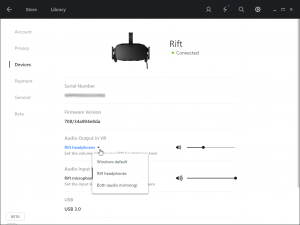Below you will find pages that utilize the taxonomy term “Annwvyn VR Game Engine”
“Scenario Testing” a game engine by misusing an unit test framework.
I don’t post regularly on this blog, but I really should post more… ^^”
If you have ever read me here before, you probably know that one of my pet project is a game engine called Annwvyn.
Where did I get from
Annwvyn was just “a few classes to act as glue code around a few free software library”. I really thought that in 2 months I had some piece of software worthy of bearing the name game engine. Obviously, I was just a foolish little nerd playing around with an Oculus DK1 in his room, but still, I did actually manage to have something render in real time on the rift with some physics and sound inside! That was cool!
Everything started as just a test project, then, I decided to remove the int main(void) function I had and stash everything else inside a DLL file. That was quickly done (after banging my head against the MSDN website and Visual Studio’s 2010 project settings, and writing a macro to insert __declspec(dllexport) or __declspec(dllimport) everywhere.)
The need for testability and the difficulties of retrofitting tests
So let’s be clear: I know about good development practice, about automated testing, about TDD, about software architecture, about UML Class Diagrams and all that jazz. Heck, I’m a student in those things. But, the little hobby project wasn’t intended to grow as a 17000 lines of C++ with a lot of modules and bindings to a scripting language, and an event dispatch system, and a lot of interconnected components that abstract writing data to the file system (well, it’s for video game save files) or rendering to multiple different kind of VR hardware, to go expand the Resource Manager of Ogre. Hell, I did not know that Ogre had such a complex resource management system. I thought that Ogre was a C++ thing that drew polygon on the screen without me having to learn OpenGL. (I still had to actually learn quite a lot about OpenGL because I needed to hack into it’s guts, but I blogged about that already.).
Lets just say that things are really getting out of hands, and that I seriously needed to start thinking about making the code saner, and to be able to detect when I break stuff.
Getting the name of an audio device from it’s GUID : Using the Oculus Rift selected audio device with OpenAL
So, while working on my game engine, I was curious about looking at the technical requirement for submitting an application to the Oculus Store.
One of the things required is that you need to target the audio output (and input) devices selected by the user in the Oculus app
So, how does the Oculus SDK tells you what is the selected device?
The Annwvyn Game Engine, and how I started doing VR
If you know me, you also probably know that I’m developing a small C++ game engine, aimed at simplifying the creation of VR games and experiences for “consumer grade” VR systems (mainly the Oculus Rift, more recently the Vive too), called Annwvyn.
The funny question is : With the existence of tools like Unreal Engine 4 or Unity 5, that are free (or almost free) to use, why bother?
There are multiple reasons, but to understand why, I should add some context. This story started in 2013, at a time where you had to actually pay to use Unity with the first Oculus Rift Development Kit (aka DK1), and where UDK (the version of the Unreal Engine 3 you were able to use) was such a mess I wouldn’t want to touch it…
